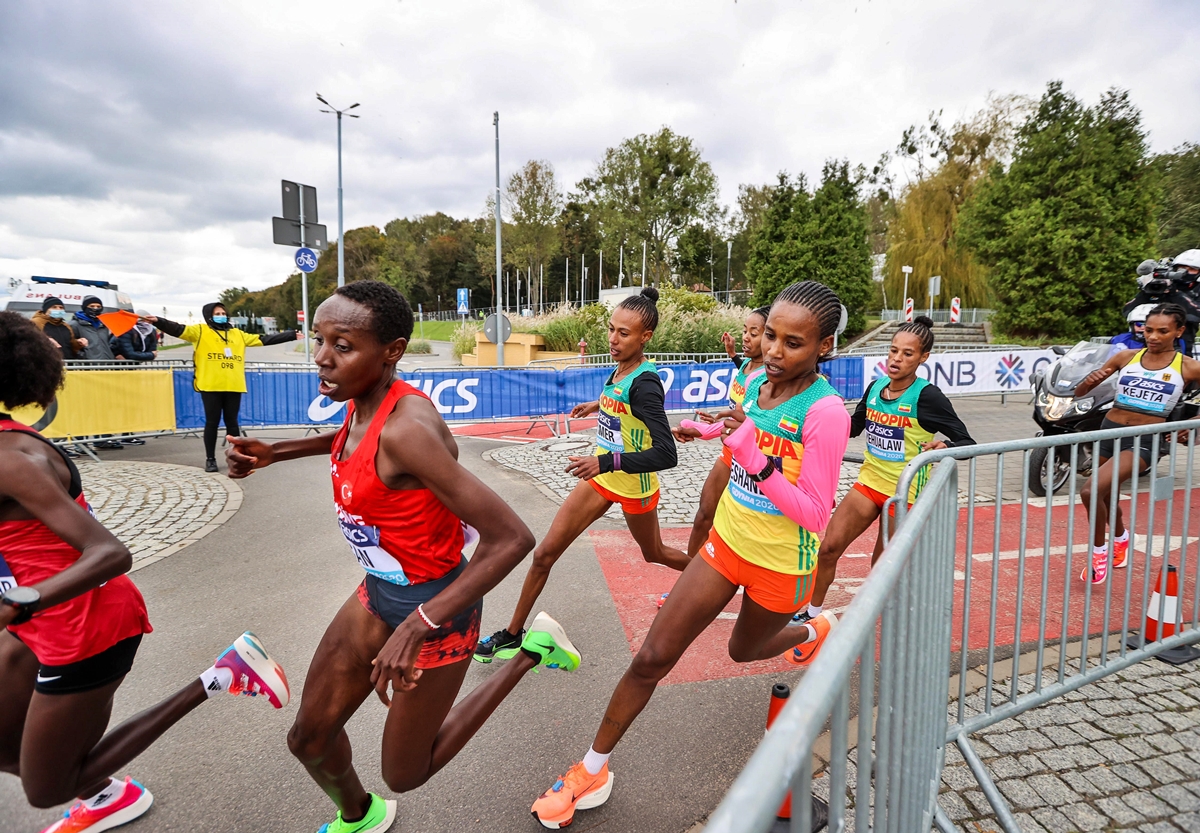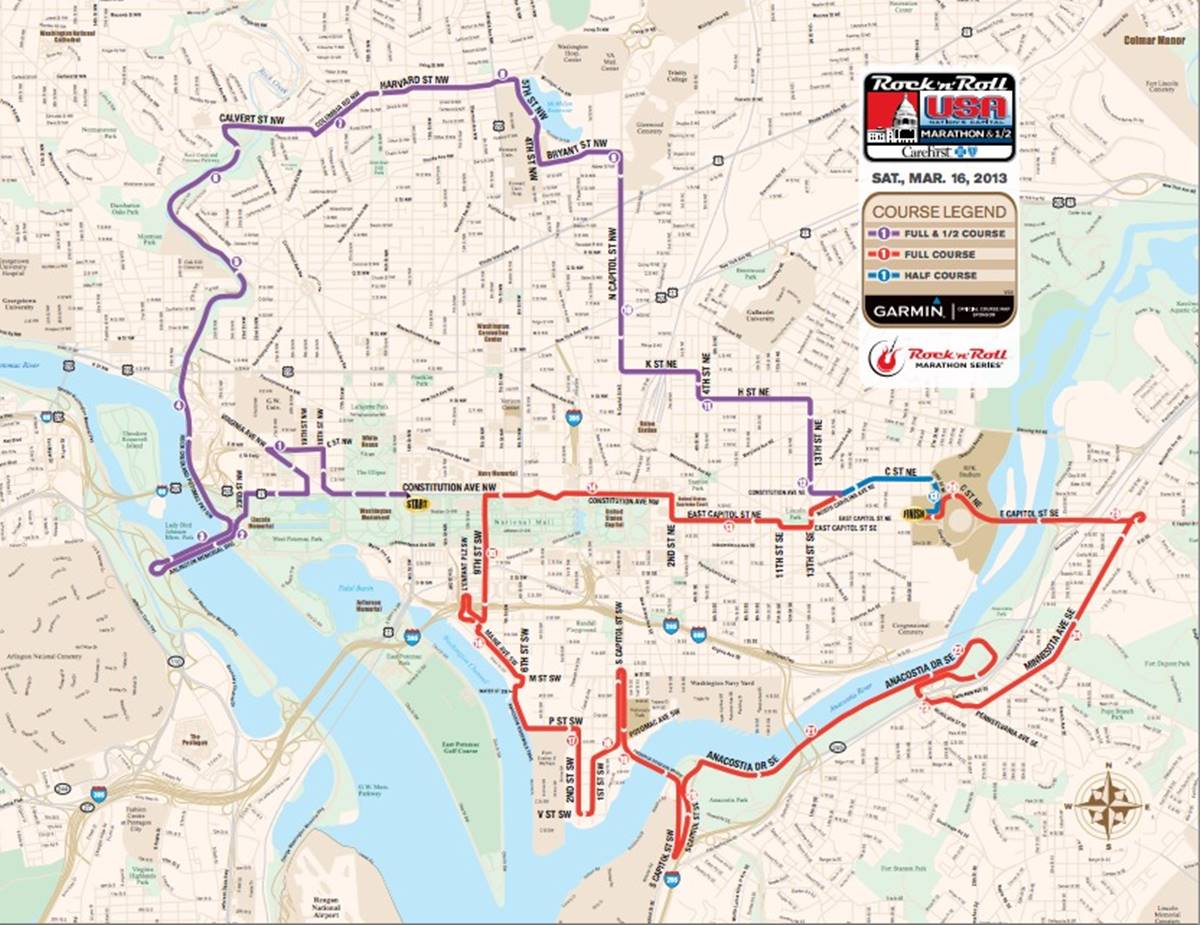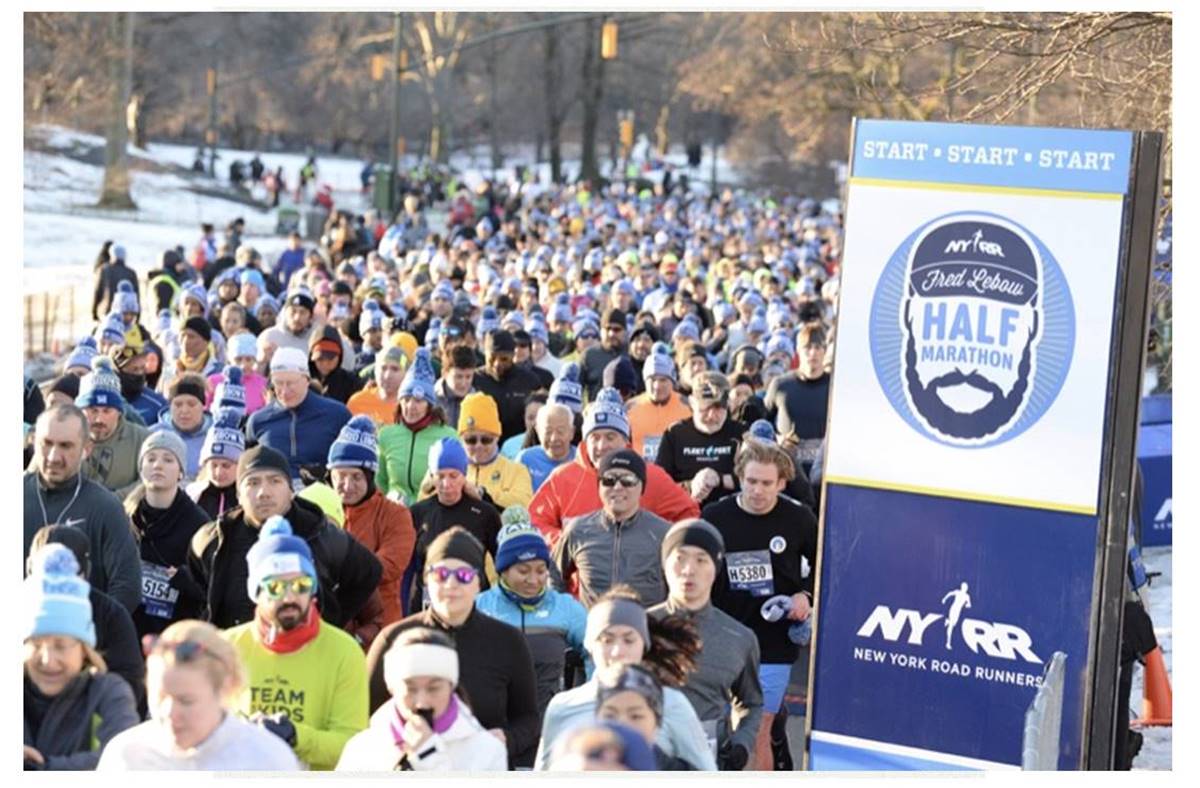

Featured
When Is The Next Half Marathon
Modified: May 22, 2024
Find out when the next featured half marathon is taking place and start training for your next running challenge.
Introduction
Half marathons are a popular and exhilarating challenge for both seasoned runners and those new to the sport. The 13.1-mile race offers a unique and rewarding experience, combining endurance, determination, and the exhilaration of crossing the finish line. Whether you’re a fitness enthusiast looking to push your limits or a beginner seeking to accomplish a significant personal goal, participating in a half marathon is a remarkable achievement.
But the question on every runner’s mind is, “When is the next half marathon?” Planning ahead and finding the right event is crucial to ensure you have enough time for training and preparation. In this article, we will explore different factors to consider when searching for the next half marathon, how to research upcoming events, and the steps to register and train for a successful race.
Before diving into the specifics, it’s essential to understand what a half marathon entails. Unlike a full marathon, which covers 26.2 miles, a half marathon is precisely half the distance, totaling 13.1 miles. This distance offers a challenging yet manageable goal for runners of all levels. It requires dedication, training, and mental and physical resilience.
When preparing for a half marathon, it’s crucial to assess several factors that will impact your race experience. First and foremost, consider your current fitness level and running abilities. Have you completed shorter races, such as 5K or 10K events? Are you confident in your ability to gradually increase your distance and endurance?
Additionally, take into account your current schedule and lifestyle commitments. Training for a half marathon requires time and dedication, so be prepared to adjust your daily routine to accommodate regular workouts and longer runs. It’s also essential to consider any potential conflicts or events that may intersect with your desired race date. Planning ahead will help you avoid scheduling conflicts and allow you to focus on your training without unnecessary stress.
Once you’ve assessed these factors, the next step is to research upcoming half marathon events. The internet is a valuable resource for finding races in your area or in a destination you’ve always wanted to visit. Popular running websites and communities often provide comprehensive lists of upcoming races, along with detailed descriptions, course information, and participant reviews to help you choose the right event.
Understanding Half Marathons
Before embarking on your half marathon journey, it’s essential to have a solid understanding of what the race entails and what you can expect. Familiarizing yourself with the structure, distance, and logistics of a half marathon will help you set realistic goals and prepare effectively.
A half marathon is a road race that covers a distance of 13.1 miles or 21.0975 kilometers. It is a significant step up from shorter races like 5Ks and 10Ks and requires a higher level of endurance and conditioning. While it may seem intimidating at first, with proper training and preparation, many runners find themselves capable of completing this challenging yet achievable distance.
Half marathons are typically organized in a race-day format where participants gather at a designated starting point and follow a marked course. The courses often pass through various terrains, such as city streets, parks, and scenic routes, providing participants with a diverse and engaging experience. It’s important to note that each half marathon may have its own unique course layout, elevation changes, and logistical details that you should familiarize yourself with before race day.
The race atmosphere of a half marathon is often a vibrant and exciting one. You’ll find yourself surrounded by a diverse mix of fellow runners, from beginners to seasoned athletes, all with the common goal of completing the race. The energy and camaraderie among participants can be incredibly motivating and inspiring, making the experience even more memorable.
Half marathons are not limited to professional runners or elite athletes. They are open to anyone who is willing to put in the time and effort to train and prepare for the challenge. In fact, many participants are first-timers who use the half marathon as a stepping stone towards longer distances, such as a full marathon.
One of the key benefits of running a half marathon is the physical and mental health benefits it brings. The training required to prepare for the race helps improve cardiovascular fitness, strength, and overall endurance. Regular running and conditioning exercises can lead to weight loss, increased muscle tone, and improved mental well-being.
In addition to the personal benefits, participating in a half marathon often gives runners the opportunity to support a charitable cause. Many races partner with local or national charities, allowing participants to raise funds and awareness for a cause close to their hearts. Racing for a cause adds an extra layer of motivation and purpose to the experience.
Now that we have a solid understanding of what a half marathon entails, it’s time to explore the various factors you should consider when choosing your next race.
Factors to Consider
When deciding on the next half marathon to participate in, there are several important factors to consider. These factors will help you choose a race that aligns with your goals, preferences, and abilities. Taking the time to evaluate these factors will ensure a more enjoyable and successful race experience.
1. Location: Consider the location of the race and whether it fits your preferences. Do you prefer a local race close to home or are you open to traveling to a different city or even a different country? Think about the logistics of travel, accommodation, and any extra costs associated with participating in an out-of-town event.
2. Terrain and Course: Think about the type of terrain you would enjoy running on. Do you prefer a flat and fast course or do you enjoy a more challenging, hilly route? Take into consideration the course’s elevation profile, scenery, and any specific landmarks or attractions it might pass by.
3. Timing: Consider the timing of the race and whether it aligns with your schedule and other commitments. Take into account how much time you will need to train and prepare for the race, as well as any potential conflicts with holidays, work obligations, or personal events.
4. Climate: Take note of the climate and weather conditions of the race location during the time of year the event is held. Consider your preferences and how well you handle heat, humidity, or cold temperatures. Keep in mind that extreme weather conditions can significantly impact your race experience.
5. Size and Atmosphere: Consider the size of the race and the atmosphere it offers. Some runners enjoy larger races with thousands of participants and a bustling race village, while others might prefer a smaller, more intimate event. Think about the energy and support you thrive on during a race and choose accordingly.
6. Race Amenities: Look into the race amenities provided by the event organizers. Does the race offer aid stations along the route, medical support, and finisher medals? Take into consideration any additional perks that might enhance your race experience, such as post-race food, entertainment, or a well-organized expo.
7. Registration Fees: Evaluate the registration fees associated with the race and whether they fit within your budget. Some races offer early bird discounts or promotional codes, so it’s worth checking for any cost-saving opportunities while still keeping in mind the overall value the race provides.
8. Race Reviews and Recommendations: Research race reviews and recommendations from previous participants. Read about their experiences, feedback, and any potential issues encountered during the event. This can give you valuable insights into the race organization, course accuracy, and overall participant satisfaction.
By considering these factors and weighing your priorities, you will be better equipped to choose a half marathon that aligns with your goals and preferences. With an event selected, the next step is to register and begin your training journey.
Researching Upcoming Events
Researching upcoming half marathon events is an exciting process that allows you to explore a wide range of races and find the perfect fit for your running goals and preferences. Here are some steps to help you navigate the process and discover the most suitable events:
1. Utilize Online Resources: Begin your research by visiting reputable running websites and online communities. These platforms often provide comprehensive listings of upcoming races, allowing you to filter and search based on location, date, and other criteria. Take advantage of search features to narrow down your options and find races in specific regions or at specific times.
2. Read Race Descriptions: Once you find a potential race, read the detailed race descriptions. Look for information on course terrain, elevation, start times, and any unique features or highlights. Consider the distance and whether it aligns with your current training level and goals.
3. Check Course Maps: Explore the course maps provided by the race organizers. This will give you an idea of the route, any significant elevation changes, and the scenic areas you will pass through. Evaluate whether the course aligns with your preferences and whether it offers the level of challenge or ease you seek.
4. Consider Participant Feedback: Look for participant reviews and testimonials from previous editions of the race. This feedback can provide valuable insights into the event’s organization, support, and overall participant satisfaction. Pay attention to comments about course accuracy, aid stations, race logistics, and the overall race atmosphere.
5. Connect with Other Runners: Engage with fellow runners through online forums or social media groups. Seek recommendations and personal experiences from those who have participated in the races you are interested in. Their firsthand accounts can offer additional perspectives and help you make an informed decision.
6. Check Registration Dates: Take note of the registration dates for your shortlisted races. Some popular events may sell out quickly, so ensure you are aware of the registration opening date and set a reminder to secure your spot. Consider any early bird discounts or promotional offers that may be available.
7. Research Race Organizers: Look into the track record and reputation of the race organizers. Consider factors such as their experience in organizing races, their adherence to safety protocols, and their commitment to providing a positive race experience for participants. Choosing a well-established and reputable organizer can enhance your race day experience.
8. Seek Recommendations: Reach out to running coaches, local running clubs, or friends who have participated in half marathons. They may be able to provide recommendations based on their experiences or offer insights into lesser-known races that are worth considering.
By thoroughly researching upcoming events, you’ll be equipped with the information needed to choose a half marathon that meets your expectations and aligns with your training and lifestyle needs. Once you’ve found your ideal race, it’s time to move on to the registration process and start preparing for the big day.
Registering for a Half Marathon
Once you have chosen the half marathon you wish to participate in, the next step is to register for the race. Registering early ensures that you secure your spot and allows you to start planning and preparing for the event. Here’s a guide to help you navigate the registration process:
1. Visit the Race Website: Go to the official website of the chosen race to find information on registration. Most races will have a dedicated registration page where you can find all the necessary details.
2. Read the Registration Guidelines: Take the time to carefully read through the registration guidelines provided on the website. Pay attention to any specific requirements, deadlines, or registration fees. Note any age restrictions or other eligibility criteria that may apply.
3. Choose Your Registration Method: Races often offer multiple registration options, including online registration or in-person registration at designated locations. Online registration is the most common and convenient method. Ensure that the race offers a secure payment gateway to protect your personal and financial information.
4. Complete the Registration Form: Fill in the required details on the registration form accurately. This may include personal information such as your name, address, age, and emergency contact information. Some registration forms may also ask for your estimated finish time or preferred wave placement.
5. Review the Waiver: Read and understand the event waiver or release form. This is a legally binding document that outlines your acknowledgement of the risks associated with participating in the race. Make sure you agree to the terms before proceeding.
6. Pay the Registration Fee: Provide the necessary payment details to complete your registration. Be prepared to pay the registration fee, which can vary depending on factors such as early bird discounts, charity entries, or additional race amenities.
7. Receive Confirmation: After submitting your registration, you should receive a confirmation email or receipt. Keep this for your records as proof of registration. If you don’t receive a confirmation within a reasonable timeframe, contact the race organizers for verification.
8. Prepare for Additional Requirements: Some races may require additional steps, such as providing proof of previous race times to qualify for specific race waves or corrals. Follow the instructions provided by the organizers to ensure you meet any additional requirements.
9. Mark Your Calendar: Add the race date to your calendar and make note of any pre-race activities or packet pickup details. Keep track of any important deadlines, such as the last day to make changes to your registration or request a refund.
10. Train and Prepare: With your registration complete, it’s time to focus on your training and preparation for the half marathon. Follow a structured training plan, fuel your body properly, and ensure you have the necessary gear and equipment to make your race day successful.
Registering for a half marathon is an exciting step towards achieving your running goals. By following these steps and completing the registration process, you’ll be on your way to joining other enthusiastic runners at the start line of your chosen event.
Training and Preparation
Training and preparation are crucial aspects of successfully completing a half marathon. Regardless of your experience level, having a structured training plan will help you build endurance, improve your running performance, and reduce the risk of injury. Here are some key considerations for your training and preparation:
1. Establish a Training Schedule: Create a training schedule that fits your lifestyle and allows for gradual progression. A well-designed plan will include a balance of running, cross-training, and rest days. Gradually increase your mileage and intensity over time to avoid overexertion and injury.
2. Focus on Long Runs: Long runs are the cornerstone of half marathon training. These runs gradually increase in distance, simulating the race day experience. Aim to complete at least one long run per week, gradually building up to the full half marathon distance.
3. Incorporate Speed Work: Integrate speed work into your training to improve your overall pace and running efficiency. Tempo runs, interval training, and hill repeats are effective methods to build speed and increase your cardiovascular fitness.
4. Include Cross-Training: Incorporate cross-training activities such as cycling, swimming, strength training, or yoga into your routine. These activities help improve overall fitness, strength, and flexibility while giving your running muscles a break.
5. Practice Race Pace and Strategies: During your training, incorporate runs at your goal race pace to familiarize yourself with the speed and effort required. Experiment with different race strategies, such as negative splits or consistent pacing, to find what works best for you.
6. Take Care of Your Body: Proper nutrition, hydration, and rest are essential for optimal performance. Fuel your body with a balanced diet, stay hydrated throughout the day, and prioritize quality sleep to aid in recovery and muscle repair.
7. Test Your Gear: Use your training runs to test different gear, including running shoes, socks, clothing, and accessories. Make sure you have comfortable and well-fitting gear to prevent discomfort or blisters on race day.
8. Prepare Mentally: Half marathons can be physically and mentally challenging. Develop mental strategies to stay focused and motivated during your training runs and on race day. Visualize success, set small milestones, and practice positive self-talk to overcome any mental hurdles.
9. Plan for Race Day: Research the logistics and details of the race day, such as the starting time, location, parking, and bag check services. Lay out your race day outfit the night before and prepare a race-day checklist to ensure you have all your essentials in place.
10. Listen to Your Body: Pay attention to any signs of injury or fatigue during your training. If you experience pain or discomfort, seek medical advice or adjust your training schedule accordingly. It’s crucial to prioritize your health and well-being throughout the training process.
Remember, every individual is unique, and what works for one person may not work for another. Listen to your body, adjust your training plan as needed, and stay consistent with your commitment. With consistent training, dedication, and a positive mindset, you’ll be well-prepared to conquer the half marathon distance and achieve your goals on race day.
Final Thoughts
As you embark on your half marathon journey, it’s important to remember that completing a half marathon is not just about crossing the finish line. It’s a personal and transformative experience that pushes you to new limits, both mentally and physically. Here are some final thoughts to keep in mind:
1. Celebrate the Journey: Your training and preparation for a half marathon will not always be easy, but remember to celebrate every milestone and achievement along the way. Whether it’s completing your first long run or setting a new personal record, acknowledge and appreciate your progress and growth.
2. Embrace the Challenges: Half marathons are meant to be challenging. Embrace the struggles and setbacks as learning opportunities. Every hurdle you overcome will make you stronger and more resilient, both on and off the race course.
3. Enjoy the Process: While crossing the finish line is exhilarating, don’t forget to enjoy the entire process leading up to race day. Embrace the early morning runs, the community of runners you encounter, and the moments of solitude and self-reflection that come with training. Each step is a part of the journey.
4. Pace Yourself: On race day, resist the temptation to start too fast. Pace yourself and trust in your training. Remember that a half marathon is about endurance, and conserving your energy early on will help you finish strong.
5. Soak in the Atmosphere: Half marathons are not only about the race itself but also about the vibrant atmosphere surrounding it. Enjoy the support of the cheering crowds, the camaraderie among fellow runners, and the sense of accomplishment that comes with being part of a larger running community.
6. Reflect on Your Achievements: After completing your half marathon, take time to reflect on your accomplishments. Consider how far you have come, the obstacles you overcame, and the lessons you learned during the training process. Use these experiences to fuel your future running goals and personal growth.
7. Set New Goals: Completing a half marathon is just the beginning of your running journey. Use this experience as a stepping stone towards new goals and challenges. Whether it’s tackling a full marathon or exploring different types of races, continue to push yourself and set new targets to keep your running journey exciting and fulfilling.
Remember, participating in a half marathon is not solely about the end result but also about the personal growth and discovery that come with the training and commitment. Enjoy the process, stay dedicated to your training, and embrace the journey towards becoming a half marathon finisher. Good luck and happy running!









